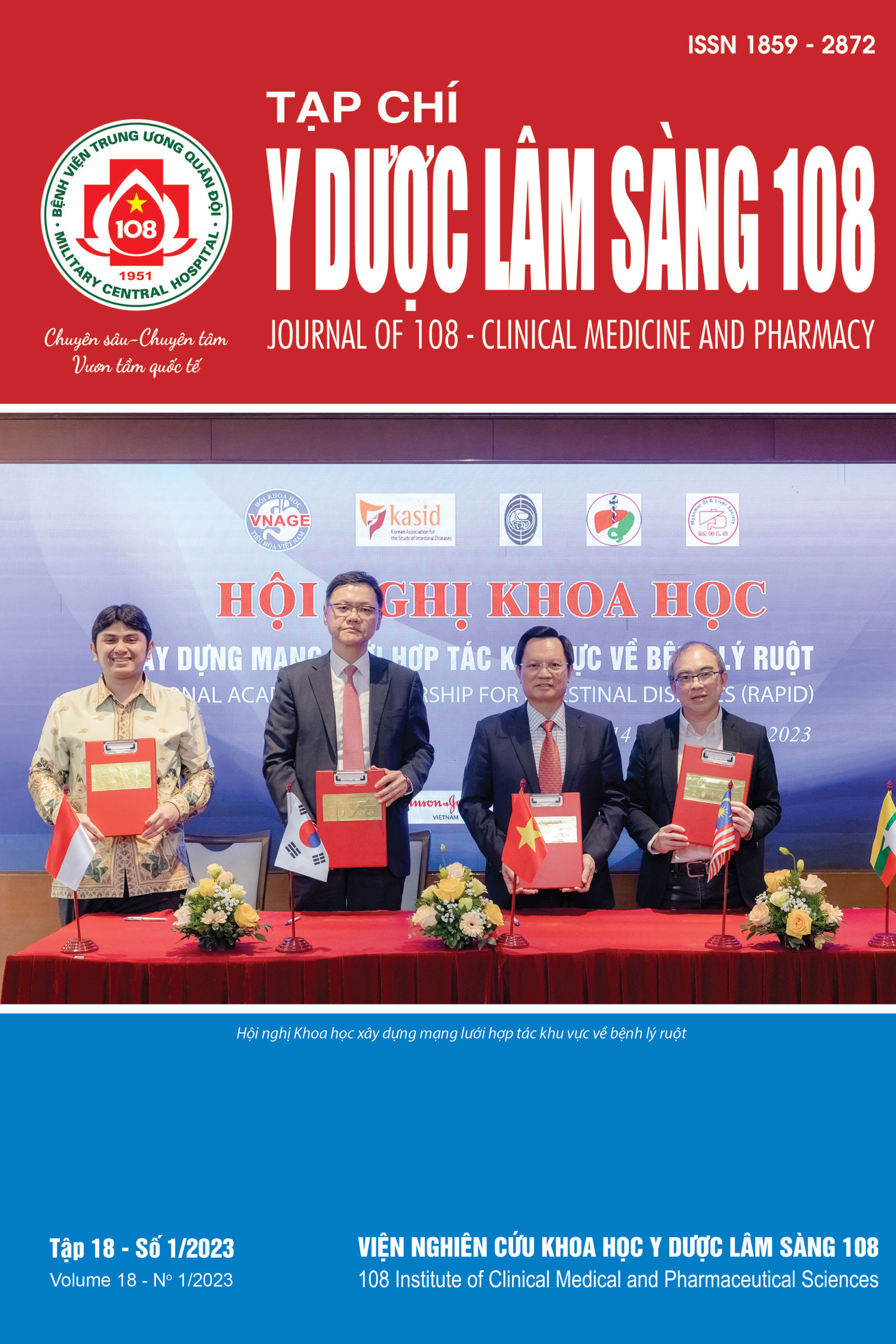Monitoring the changes of estimated continuous cardiac output during hip replacement surgery using Nihon Kohden monitor
Main Article Content
Keywords
Abstract
Objective: To observe the haemodynamic changes after spinal anaesthesia during hip replacement monitored non-invasively with Nihon Kohden Monitor. Subject and method: A prospective cross-sectional descriptive study was conducted amongst 66 patients undergoing hip replacement after spinal anesthesia at Tam Anh Hospital (Ho Chi Minh City) from May 2021 to March 2022 to investigate estimated continuous cardiac output (esCCO) across different times intraoperatively. Result: esCCO was decreased from incision to the end of surgery at a rate of 9% to 14.6% (p<0.001), peaked after acetabular exposure at 14.6% (p<0.001). Conclusion: Overall, the esCCO index is reduced during hip surgery. Therefore, it is necessary to closely monitor the hemodynamic changes, especially during the acetabular exposure and reaming, in order to have appropriate interventions.
Article Details
References
2. Bộ Y tế (2016) Hướng dẫn quy trình kỹ thuật chuyên ngành quy trình gây mê hồi sức.
3. Meyhoff CS, Hesselbjerg L, Koscielniak-Nielsen Z, et al (2007) Biphasic cardiac output changes during onset of spinal anaesthesia in elderly patients. Eur J Anaesthesiol 24(9): 770-775.
4. Clark DI, Ahmed AB, Baxendale BR et al (2001) Cardiac output during hemiarthroplasty of the hip. A prospective, controlled trial of cemented and uncemented prostheses. J Bone Joint Surg Br 83(3): 414-418.
5. Yokoyama M, Ueda W, Hirakawa M (2000) Haemodynamic effects of the lateral decubitus position and the kidney rest lateral decubitus position during anaesthesia. Br J Anaesth 84(6): 753-757.
6. Wieslander B, Ramos JG, Ax M et al (2019) Supine, prone, right and left gravitational effects on human pulmonary circulation. J Cardiovasc Magn Reson, 21 (1): 69.
 ISSN: 1859 - 2872
ISSN: 1859 - 2872
